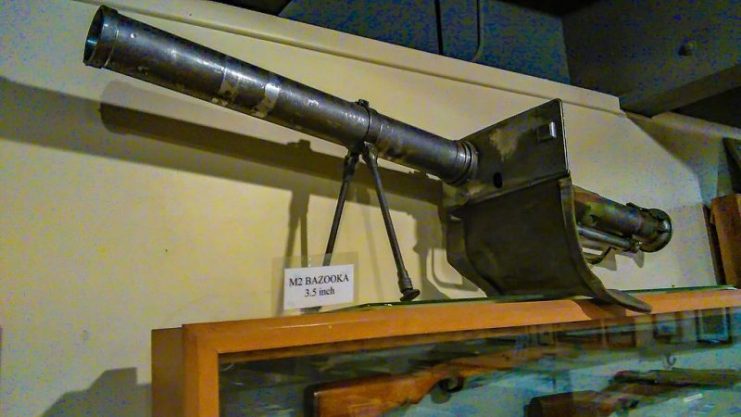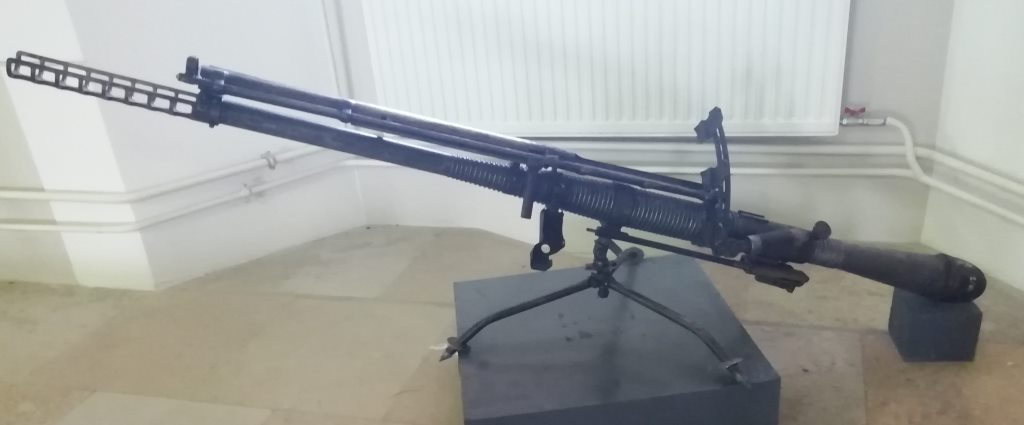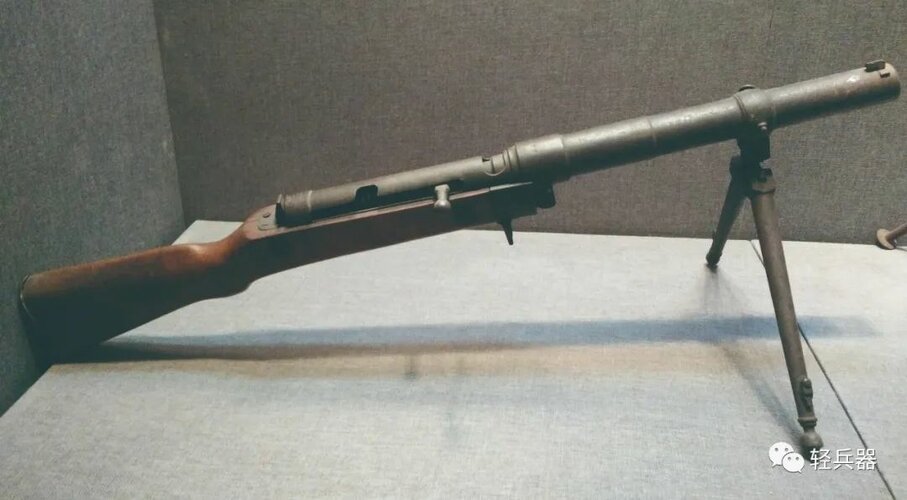 . Tank Archives: The Father of All RPGs. T1 Prototype
. Tank Archives: The Father of All RPGs. T1 Prototype
In parallel, the ammunition was also improving. The M6A1 and M6A2 had altered fuses (adapted for the M1A1 and M9), and modified fins. The M6A3 received a hemispherical ballistic cap instead of a conical one, as well as an improved M400 detonator with an additional safety (a spring that blocked the striker and only freed it after the rocket left the barrel). The M6A3’s warhead contained 230 g of pentolite, and the rocket was propelled by 65 g of gunpowder. The penetration of the M6A3 increased to 100 mm (previous rockets had 75 mm). M7, M7A1, M7A2, and M7A3 rockets were used for training. These grenades were identical to real ones, but had inert warheads. The M9 and M9A1 received an incendiary-smoke M10 grenade, loaded with 400 g of white phosphorous. In addition to generating smoke, it could be used to attack the enemy in buildings and field fortifications. In total, 12,996,000 HEAT rockets and 2,607,000 smoke rockets were built.
![[Droop] Bazooka M1A1 - US WW2](https://th.bing.com/th/id/R.da14bc89bcd236fb6986fdf695dcbe84?rik=vakfe6Q%2bGjhHjw&riu=http%3a%2f%2fdroopaille.free.fr%2fAirsoft%2fBazooka%2fM1-M1A1.jpg&ehk=6GN3AOxQUeEODO62koqqME223upl9dFGoE6LbGhy3bY%3d&risl=&pid=ImgRaw&r=0)
M1 - M1A1

M9
Bazooka - Wikipedia

M18 Recoilless Rifle, 77mm

Ordnance, RCL, 3.45 in, 180mm

Anti-Tank Launchers for All Factions
![[Recoilless Rifle 57-mm, T15E13 and T15E9]500x240](https://www.lonesentry.com/manuals/recoilless-weapons/p4-recoilless-rifle-57-mm-t15e13-t15e9.jpg)
57MM T15
![Recoilless Rifle 57-mm, T15E13 and T15E9 [Recoilless Rifle 57-mm, T15E13 and T15E9]500x240](https://www.lonesentry.com/manuals/recoilless-weapons/p4-recoilless-rifle-57-mm-t15e13-t15e9.jpg) 75-MM, T21
75-MM, T21
 T74
T74
US T74 3.5 Anti tank rocket launcher
 T24
T24
Developed in 1943, the 3.25 inch (82.55 mm) T24 rocket launcher apparently followed in the footsteps of the 3.25 inch (82.55 mm) T16, a project launched in 1942 or 1943 by the Artillery Development Division of the U.S. Army Ordnance Department in order to come with a weapon with a longer range (and greater punch?) than that of the 2.36 in Rocket launcher, M1.
Both weapons were more robust and heavier than the M1. As a result, neither of them found much favour with the infantry.
From the looks of it, the photograph of the T24 mentioned above was taken around May 1944, at the Aberdeen Proving Ground, in Maryland.
The capture by American forces of several RPzB 54, an 88 mm (3.46 inch) German rocket launcher also known as the Panzerschreck and Ofenrohr, in 1944, in Italy (?), led to a decision to upgrade the second generation of American rocket launchers, thus leading to the development of the 3.5 inch (88.9 mm) T74 rocket launcher.
The T24 was seemingly put aside around September 1944.
Ironically, the capture by German forces of several M1s, seemingly on the Eastern Front, had led to the development of the RPzB 54. An early version of that weapon might, I repeat might, have been known as the RPzB 43.
As it turned out, the production version of the T74, the 3.5 in Rocket launcher, M20, did not see action during the Second World War. Given the end of that conflict, the U.S. Army did not proceed at high speed to put it in the hands of the troops. Small scale production began at some point, however, perhaps in 1948-49.
The onset of the Korean War, in June 1950, caught the U.S. Army by surprise. Realising that its rocket launchers could not penetrate the armor of the North Koreans’ Soviet-made tanks, it rushed the M20 into mass production. The first examples of that “Super Bazooka” reached the Korean peninsula around mid





 .
.  . Kurchevsky recoilless anti-tank rifle.
. Kurchevsky recoilless anti-tank rifle.  .
.  winchester
winchester  . Winchester Williams
. Winchester Williams . Browning.
. Browning.  . Mosin-Nagant Anti-Tank Rifle.
. Mosin-Nagant Anti-Tank Rifle.  .
.